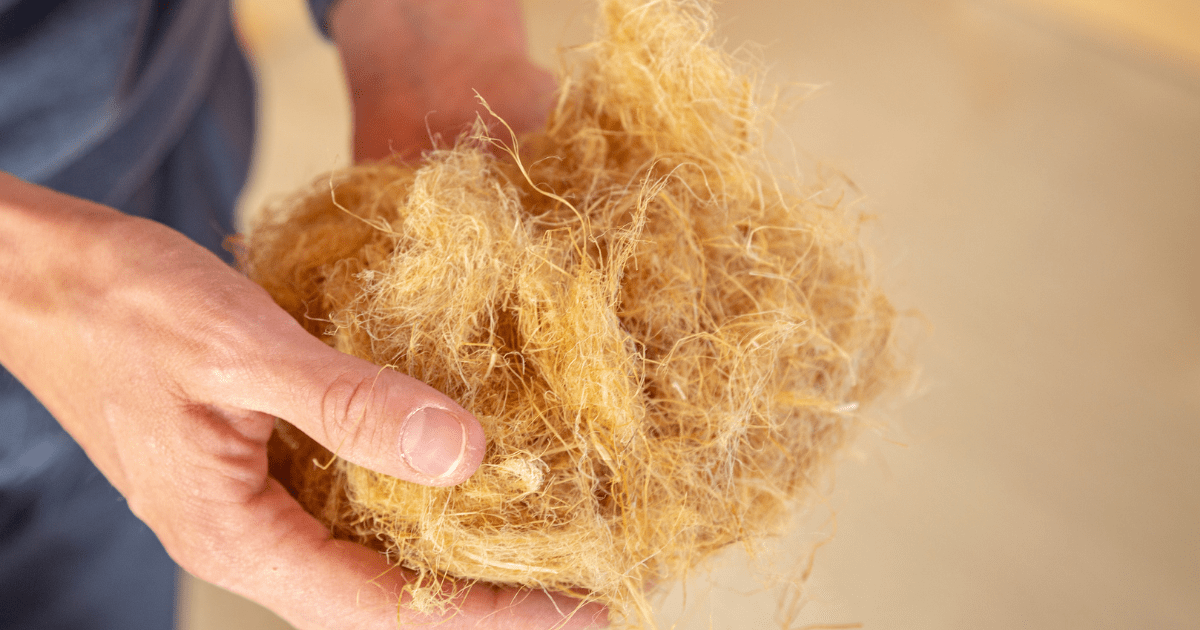The U.S Department of Energy (DOE) is sponsoring a project to develop hemp fibre insulation to provide a more environmentally friendly and sustainable option.
The Biden Administration directed the DOE to spearhead the United States policy by driving innovation and deployment of clean energy technology and decarbonisation. It is hoped this may address climate change.
The Innovation Crossroads program awarded the COO Tommy Gibbons of Idaho-based Hempitecture, an annual stipend to support research into hemp insulation. In particular, the DOE is interested in the company’s HempWool product which they describe ‘as the most sustainable high performing insulation material on the planet’ on their website. It is also non-toxic, stores heat and has a low carbon footprint.
Hempitecture plans to conduct research and testing on new blends of their material to improve the insulation value and fire resistance. They also plan to test onshore insulation manufacturing using industrial hemp waste from American farmers.
Hempitecture also sells hemp hurd and binder which can be used for hempcrete insulation. They conduct hemp-building contractor training workshops.
The grant program supports science-based startups to advance game-changing technologies bringing them from the laboratory to the marketplace.
Hempitecture plans
Hempitecture plans to conduct research and testing on new blends of their material to improve the insulation value and fire resistance. They also plan to test onshore insulation manufacturing using industrial hemp waste from American farmers.
Speaking to Hemp Build Magazine, Tommy Gibbons said: “The Department of Energy is interested in the decarbonisation potential of insulation and other building materials made from hemp fibres.”
But it was HempWool that came to the DOE’s attention because it is non-toxic, high-performing and carbon-negative to manufacture. Hemp-based insulation releases zero carbon and can be sourced locally from U.S. grown hemp.
The benefits of hemp
The building industry is one of the worst offenders for environmentally damaging materials. Mineral wool used in insulation is one of the most polluting products often used in home construction according to the U.S Environmental Protection Agency.
The mineral wool and fibreglass are made by heating basalt and other rock materials to 1600 degrees C and spinning long strands of molten fibres that release toxic gasses into the atmosphere. They contribute more than 30 percent of the stratospheric ozone depletion
Hemp offers a hopeful alternative as it is a renewable source that is durable and fast-growing. It can also be used to replace concrete which uses large amounts of water and traps heat causing temperatures to rise. Hemp absorbs carbon taking in roughly 5 tons of CO2 per acre through photosynthesis while growing.
Read more: Paris builds the first public building using hempcrete

 News6 months ago
News6 months ago
 Science5 months ago
Science5 months ago
 Industry6 months ago
Industry6 months ago
 News6 months ago
News6 months ago
 News5 months ago
News5 months ago
 Health4 months ago
Health4 months ago
 News5 months ago
News5 months ago
 Health3 months ago
Health3 months ago










